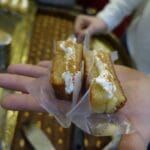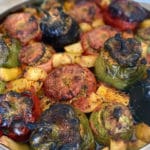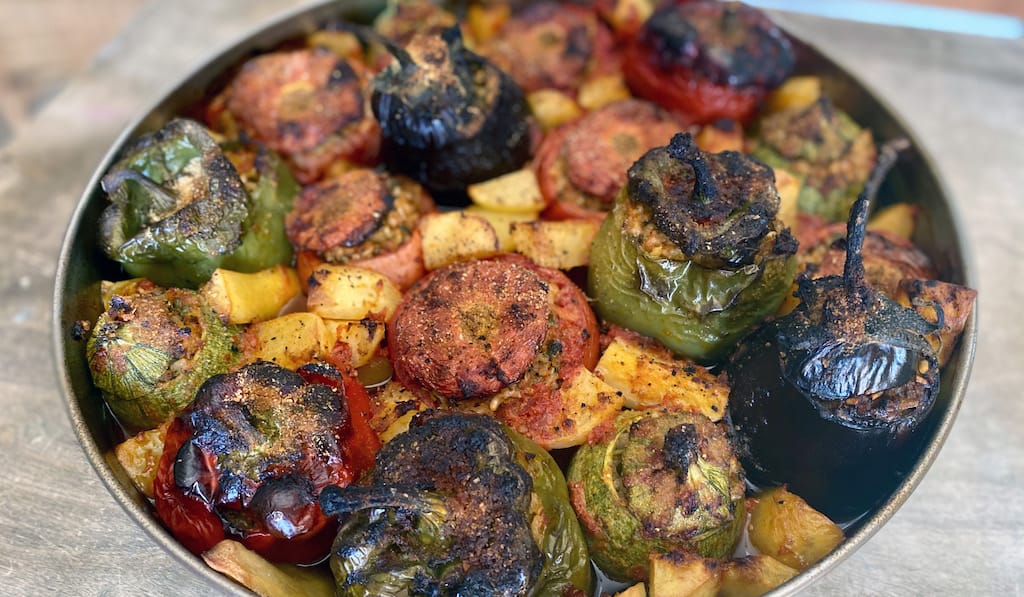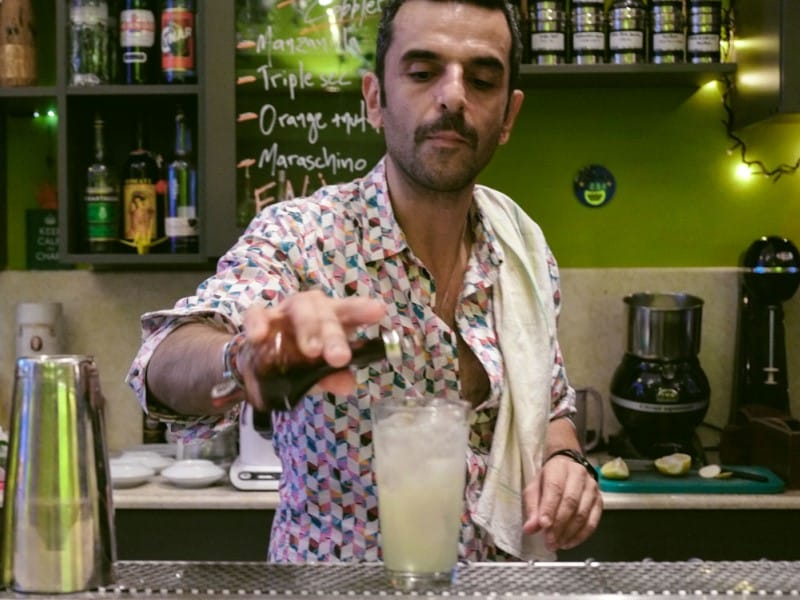The debate rages on: which are Greece’s best traditional Christmas cookies, kourambiedes or melomakarona? Amongst our friends and family, moist, honey-soaked melomakarona win out over the crumbly, butter-rich almond kourambiedes.
The word “melomakarona” is a combination of meli, which means “honey,” and makaronia, which comes from the ancient Greek word makaria (μακαρία), meaning “blessed” (and having nothing to do with the Italian pasta with the Greek name “macaroni”). Long ago, the makaria was a piece of oval-shaped bread made for a funerary dinner to bless the dead. Later on, the makaria was soaked in honey and became known as melomakarono (the singular form of the word; these cookies are also called finikia by some). The treat supposedly came from the Greeks of Asia Minor, who would prepare and eat melomakarona at Christmastime.
Melomakarona are usually made with semolina for a crumbly texture or with wheat flour for a crisper one. Traditionally, the dough includes orange juice or peel, olive oil, sugar, cloves, cinnamon and cognac. It is then formed into small, egg-shaped ovals, which are baked to a deep golden-brown hue. As soon as they come out of the oven, the cookies are soaked in a cold honey-based syrup – the amount depends on the baker. They may then be dipped in crushed walnuts or almonds. Plenty of home cooks will skip the syrup, and we especially love that version for dipping in coffee and tea (but it’s hard to find the cookies without syrup in pastry shops).
Because of their simple nature, melomakarona are ripe for variation and experimentation. They are commonly dipped in dark or milk chocolate. They are less commonly stuffed with myzithra, an unsalted fresh cheese. The version made by Pontic Greeks (those with origins in Turkey’s Black Sea region), called isli or itsli, are bulkier, triangle-shaped and filled with walnuts, cinnamon and cloves.
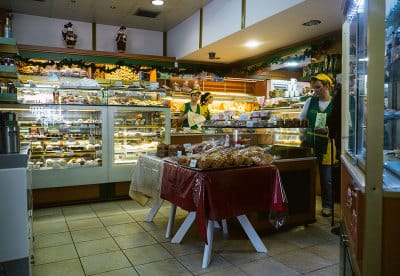 Starting in early December, virtually every Greek home will set out big platters of beautifully arranged melomakarona, along with kourambiedes and vasilopita. When we don’t feel like making the cookies at home ourselves, we might head to one of our favorite pastry shops, such as Afoi Asimakopouloi, which prepares two kinds: the classic version, generously sized and well soaked for those with a sweet tooth, and a square-shaped version trimmed with walnuts, with less syrup and a more substantial texture. At Kallimarmaro in Varnava Square, Pagrati, we found the most aromatic melomakarona in miniature proportions, as well as the usual size, plus another version dipped in bold dark chocolate. They have an exquisite aroma and a balanced level of syrup. Fysis, a health-oriented dessert shop that uses organic raw materials and makes products addressing various health concerns, makes a version of melomakarono with agave syrup. We really love their subtle – almost undetectable – sweetness.
Starting in early December, virtually every Greek home will set out big platters of beautifully arranged melomakarona, along with kourambiedes and vasilopita. When we don’t feel like making the cookies at home ourselves, we might head to one of our favorite pastry shops, such as Afoi Asimakopouloi, which prepares two kinds: the classic version, generously sized and well soaked for those with a sweet tooth, and a square-shaped version trimmed with walnuts, with less syrup and a more substantial texture. At Kallimarmaro in Varnava Square, Pagrati, we found the most aromatic melomakarona in miniature proportions, as well as the usual size, plus another version dipped in bold dark chocolate. They have an exquisite aroma and a balanced level of syrup. Fysis, a health-oriented dessert shop that uses organic raw materials and makes products addressing various health concerns, makes a version of melomakarono with agave syrup. We really love their subtle – almost undetectable – sweetness.
Published on December 24, 2014
Related stories
January 26, 2016
IzmirQuick bite: On our Izmir food tour we’ll explore the tangled roots of this Aegean city’s cuisine and culture, enjoying the friendly laid back environment of the markets near the agora and sampling a variety of dishes unique to this city. If Istanbul is Turkey’s New York then Izmir is definitely its New Orleans. In…
September 18, 2020
AthensIn terms of popularity, no other dish in Greece can compete with gemista (γεμιστά, which means stuffed in Greek and refers to vegetables stuffed in various ways). I can’t think of even one person I know who doesn’t eat it in some form, whether tomatoes, peppers, zucchinis (and their flowers), onions or eggplants stuffed with…
July 5, 2013
AthensEditor’s note: This is the third piece in our series uncovering the hidden gems in some of Athens’ most touristy neighborhoods. After checking out Psyri and Plaka, we now turn to Syntagma. The quiet neighborhood where Makalo is located, right between Syntagma and Plaka, is home to some good restaurants (such as old-fashioned Paradosiako) and…









































